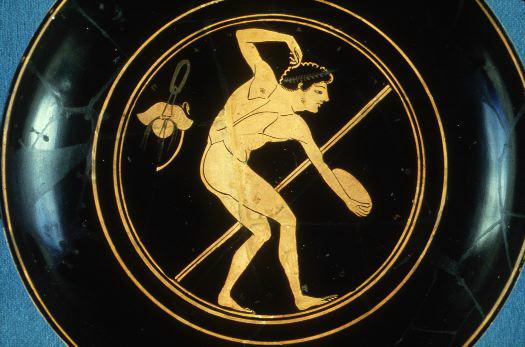

The image of Discobolus also featured prominently in Leni Riefenstahl's 1938 documentary "Olympia", which is still considered one of the most groundbreaking and important films of all time, despite the films links to the Nazi regime. Janda-Suk studied these statues, and worked on the new technique for just one year before it helped him to win the silver medal in Paris, and established this as the most effective technique for over a century. Although the original statue was lost, many Roman reconstructions are still popular and on display today. He based this movement on the famous sculptures the Discobolus of Myron, created by Myron of Eleutherae in Greece in the mid-fifth century BCE. The modern technique of rotating the body before releasing the disc was first introduced the Paris Games in 1900, by František Janda-Suk of Bohemia (modern-day Czechia). For the women's event, the Soviet Union and East Germany had collected the most Olympic gold medals between 19, and, in addition to this, female athletes from Eastern European countries dominated the sport in the 1980s, setting 14 of the top 15 throws recorded during this decade.

Al Oerter is the most successful discus thrower in Olympic history, with four medals to his name between 19, greatly contributing the the US' tally of 13 golds in the men's event. The men's world record of 74.08 meters is the longest-standing men's record in athletics, and was set by Jürgen Schult of East Germany in 1986, while another East German, Gabriele Reinsch, set the women's world record in 1988 with a throw of 76.8 meters. The Olympic record for women was set by Germany's Martina Hellmann in 1988, with a distance of 72.3 meters, and the men's record was set by Lithuania's double gold-winner Virgilijus Alekna in 2004, with a distance of 69.89 meters. For men, the disc weighs two kilograms and is 22cm in diameter, while it weighs one kilogram and is 18cm in diameter for women.Īs with the other three throwing events at the Olympics (hammer throw, javelin and shot put), the weight differences for men and women has allowed for similar records to be set over time for example, in the 2020 Games the winning throws for men and women had a difference of just eight centimeters. thicker in the middle than at the edges) disc as far as possible along the field.

The modern technique sees athletes rotate their bodies (usually one and a half turns) to throw a lenticular (i.e. The sport dates back as far as the eighth century BCE, and it was re-popularized among students in Magdeburg, Germany in the 1870s today it remains one of the most iconic Olympic events due to its connection with the Ancient Olympic Games and ancient Greco-Roman artworks. The discus throw has been a permanent feature for men at the Summer Olympics since the first modern Games in 1896, while the women's event has been present since 1928.


 0 kommentar(er)
0 kommentar(er)
